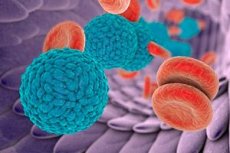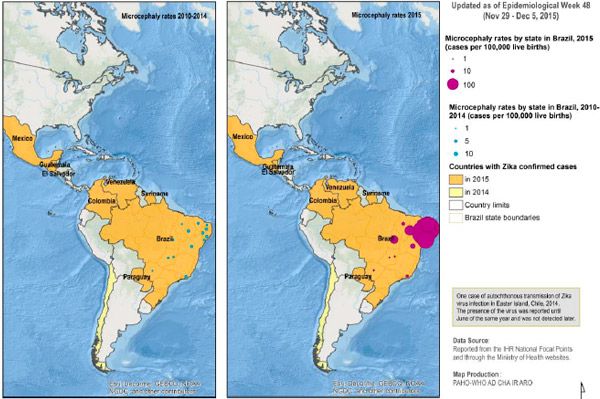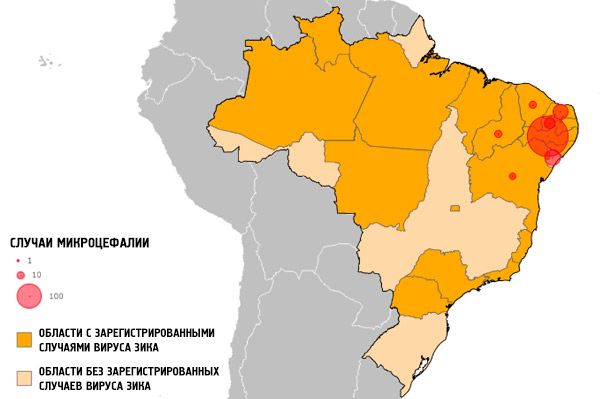Medical expert of the article
New publications
Zika virus is the causative agent of the fever.
Last reviewed: 06.07.2025

All iLive content is medically reviewed or fact checked to ensure as much factual accuracy as possible.
We have strict sourcing guidelines and only link to reputable media sites, academic research institutions and, whenever possible, medically peer reviewed studies. Note that the numbers in parentheses ([1], [2], etc.) are clickable links to these studies.
If you feel that any of our content is inaccurate, out-of-date, or otherwise questionable, please select it and press Ctrl + Enter.

Zika virus (ZIKV) is a member of the Flavivirus genus, Flaviviridae family, and is a zoonotic arbovirus infection transmitted by Aedes mosquitoes. In humans, this flavivirus causes a disease known as Zika fever, which is etiologically related to yellow fever, dengue, West Nile, and chikungunya fever, which also develop as a result of flavivirus infection.
On December 1, 2015, the Pan American Health Organization (PANO, the regional office of WHO) issued an epidemiological alert to health authorities in North and Latin America about the spread of the Zika virus in tropical and subtropical zones of the region.
Structure and life cycle of the Zika virus
The structure of the Zika virus, which is an RNA-containing non-cellular virion, is similar to the structure of all flaviviruses. The Zika virus has a spherical nucleocapsid with a diameter of about 50 nm with a membrane - a glycoprotein shell, the surface proteins of which are located in icosahedral symmetry.
Inside, the nucleocapsid contains single-stranded linear RNA encoding viral proteins. A special role is played by the membrane protein E, thanks to which the nucleocapsids of the virus penetrate into the human cell, attaching to the receptors of their cytoplasmic membranes.
Self-reproduction of viral RNA (replication) occurs on the surface of the endoplasmic reticulum in the cytoplasm of virus-infected cells. In this case, the virus uses proteins of the captured host cells to synthesize its polyprotein. And from it, by transferring RNA into cellular mRNA during replication, it reproduces the synthesis of its structural and non-structural nucleoproteins. The release of new Zika virus virions occurs upon death (lysis) of the affected cell.
It has been suggested that dendritic cells near the bite site are first infected (affected cell nuclei have been identified in them), and then the infection spreads to the lymph nodes and blood.
The life cycle of this flavivirus occurs in the body of blood-sucking mosquitoes, infected humans and mammals. The Zika virus is transmitted to humans through the bite of infected Aedes Albopictus, Aedes Aegypti, Aedes Polynesiensis, Aedes Unilineatus, Aedes Vittatus and Aedes Hensilli mosquitoes. These mosquitoes prefer to live indoors and outdoors near people, laying their eggs in standing water in buckets, animal bowls, flower pots and vases with flowers, in tree hollows, in piles of garbage. Insects are very aggressive during the day.
Experts believe that mosquitoes become infected when they bite a person who is already infected with the virus. Mothers infected with the Zika virus can transmit the virus to their babies for some time after infection, causing children to be born with a neurological pathology in the form of a small skull and brain (microcephaly). In 2015, 1,248 such cases were registered in 14 states of Brazil (in 2014, there were only 59 cases).
It is possible that the infection can be transmitted through contaminated blood or sexual contact. In 2009, it was proven that the Zika virus can be transmitted sexually from person to person. Biologist Brian Foy, an expert in arthropods and infectious diseases from Colorado State University (USA), was bitten by mosquitoes several times during a visit to Senegal. The fever developed after his return to the States, but before that (even before the symptoms of the disease appeared), he had sex with his wife, who also fell ill with Zika fever.
The ZIKV virus is currently being studied, and experts do not rule out the possibility of becoming infected with it through a blood transfusion.
Symptoms
The incubation period for Zika virus infection ranges from 3 to 12 days after being bitten by an infected mosquito. And in about 70% of cases, the infection is asymptomatic.
Clinical symptoms of Zika virus infection include:
- minor headaches;
- general malaise;
- an itchy macular or papular rash on the skin (the rash first appears on the face and then spreads over the entire body);
- fever;
- pain in muscles and joints with possible swelling of small joints;
- hyperemia and inflammation of the conjunctiva (conjunctivitis);
- pain in the eye sockets;
- intolerance to bright light.
In rare cases, dyspeptic symptoms are observed. The first sign of Zika fever is a mild headache, a rise in temperature to +38.5°C and a progressive rash. New rashes continue during the first three days, the fever lasts for about five days. Then the temperature normalizes, and only the rash remains, which also gradually disappears.
Diagnostics
Diagnosis of Zika fever is based primarily on the detection of viral RNA from clinical blood samples of patients.
The main diagnostic methods are: detection of nucleic acids in blood serum (in the first three days of the onset of symptoms), as well as in saliva or urine (in the first 3-10 days from the onset of symptoms) – using reverse transcriptase-polymerase chain reaction (PCR).
Serologic tests, including immunofluorescence and enzyme immunoassays, may indicate the presence of IgM and IgG antibodies.
Differential diagnosis should take into account the significant similarity of Zika fever with other infectious diseases that develop as a result of mosquito bites in endemic regions:
Treatment
There is no specific treatment for the Zika virus, and there is currently no vaccine or preventative measures.
So, only symptomatic treatment is carried out, aimed mainly at reducing pain and fever - using antipyretic and analgesic drugs. Most often, Paracetamol is recommended: 350-500 mg up to four times a day. The drug can cause side effects in the form of nausea, pain in the stomach, decreased heart rate and sleep disorders. Paracetamol is contraindicated in case of kidney and liver failure, as well as during pregnancy.
And it is recommended to relieve itching with antihistamines (Tavegil, Suprastin, etc.). You also need to drink more fluids to prevent dehydration.
To avoid the risk of bleeding, CDC and the U.S. National Center for Emerging and Zoonotic Infectious Diseases (NCEZID) experts do not recommend the use of aspirin and other nonsteroidal anti-inflammatory drugs (NSAIDs) until hemorrhagic fever has been ruled out.
Prevention
Prevention of Zika virus infection includes personal protection against mosquito bites:
- wear clothing that covers the body;
- use repellents;
- use mosquito nets and screens on windows to prevent mosquitoes from entering the premises;
- destroy mosquitoes and their breeding grounds.
Since the Aedes mosquito vectors are active during the day, it is recommended that those who sleep during the day (especially small children, the sick or the elderly) be protected with insecticide-treated mosquito nets.
Most people infected with ZIKV recover fully without serious complications, and to date, there have been no reported deaths related to Zika virus.

Brazilian states with confirmed reports of ZIKV infection cases in 2014-2015, and microcephaly cases in 2015, as of November 17, 2015.
However, the prognosis for the spread of this infection is not encouraging. Until 2007, the Zika virus caused outbreaks of fever in tropical Africa and in some areas of Southeast Asia, after which it spread to some islands of the Pacific region.

In April 2015, the virus was first reported in South America. Zika fever is considered an infectious disease that is rapidly spreading: its spread has been noted in Brazil, Chile, Colombia, El Salvador, Guatemala, Mexico, Paraguay and Venezuela.
As of the end of January 2016, cases of fever have been reported in several European countries: Denmark, Sweden, Germany, Portugal, Finland, Switzerland and England, as well as in the United States.
As noted in the PANO report, the Zika virus can cause congenital malformations in newborns - microcephaly.


 [
[